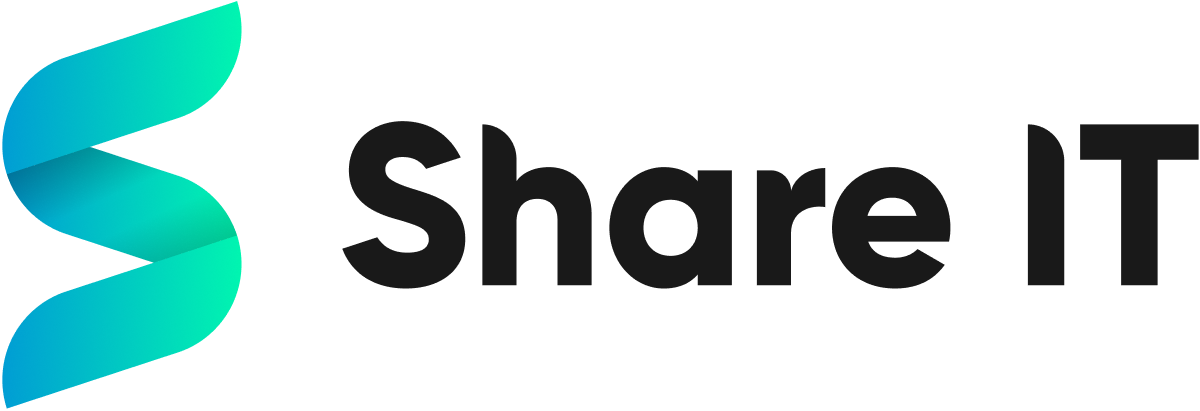Google Consent Mode v2 Explained: What Marketers Need to Know

Introduction to Google Consent Mode v2
Google Consent Mode v2 is an enhanced version of Google’s solution designed to help businesses maintain compliance with data privacy regulations like GDPR and ePrivacy while optimising website analytics and advertising performance. It enables websites to adjust how Google services, such as Google Ads and Google Analytics, behave based on the user’s consent status. By providing a framework that integrates consent signals, it ensures that businesses can collect necessary data responsibly and transparently.
At the core of Consent Mode v2 is its ability to operate in both a consented and non-consented environment. With this version, marketers gain enhanced functionality to measure and optimise campaign performance even if users choose not to allow cookies. Instead of tracking individual users, Google uses advanced modelling techniques to recover aggregated insights without violating consent preferences. This allows businesses to bridge the gap between respecting privacy choices and maintaining actionable data.
Google Consent Mode works through two key signals:
- ad_storage: Governs cookie usage for advertising purposes, ensuring ads are delivered in accordance with user consent.
- analytics_storage: Controls cookie behaviour for analytics activities, determining whether data about website interactions is collected.
Version 2 amplifies its flexibility by improving integration with consent management platforms (CMPs), allowing updates to automatically propagate user preferences. This ensures real-time compliance without manual intervention. Additionally, it harmonises with Google Tag Manager to simplify implementation.
Brands can benefit from better attribution modelling, including conversion measurement that respects user privacy settings. Moreover, Consent Mode v2 supports granular data controls, helping companies tailor their approach for different regions or regulatory demands.
This advancement underscores Google’s focus on balancing privacy-first user experiences with the data needs of businesses. By addressing consent holistically, marketers gain tools to responsibly adapt their strategies while building trust.
What is Google Consent Mode and Why Does It Matter?
Google Consent Mode is a framework introduced by Google to help businesses and marketers navigate the challenges of data privacy regulations, such as GDPR and ePrivacy Directive. It enables websites to tailor how Google tags behave based on the user’s consent choices. This tool is designed to balance compliance with privacy laws and the collection of actionable data for optimisation and measurement.
The core idea behind Google Consent Mode is to allow websites to run Google analytics, advertising, and other tracking tags with modified functionality when a user does not grant consent for cookies. When consent is withheld for ad cookies or analytics cookies, Consent Mode adjusts the tag behaviour, offering two key operational modes:
- Ad Storage: Controls the usage of cookies related to advertising. If users do not consent to ad tracking, no ads personalisation cookies are set.
- Analytics Storage: Determines the use of cookies for web behaviour analysis. When consent is not recorded, data is processed without persisting any user-identifiable tracking.
Through this mechanism, websites can still gather aggregated, non-identifiable data to measure performance or monitor conversions without violating user privacy. For instance, if a user denies cookie usage for ads, Google still records conversion pings using anonymised data rather than identifiable cookies.
Google Consent Mode matters because it supports businesses in adhering to compliance while mitigating data gaps caused by modern consent practices. It helps marketers continue gathering valuable insights by enabling alternative data collection methods. By doing so, Consent Mode reduces the risk of losing critical analytics and marketing efficacy, ensuring businesses can optimise campaigns without fully sacrificing user privacy.
In an era of growing privacy awareness, Consent Mode serves as a vital tool, bridging the gap between user respect and actionable data needs.
Key Updates in Version 2.0
Google Consent Mode version 2.0 introduces significant enhancements designed to provide marketers with greater flexibility, improved privacy compliance, and more actionable insights. These updates align with evolving privacy regulations while preserving the ability to measure and optimise advertising effectiveness. Key changes in version 2.0 focus on extending functionality, streamlining implementation, and refining data reporting capabilities.
Enhanced Measurement Without Cookies
Version 2.0 strengthens the ability to collect anonymised data when user consent is not provided. It achieves this by leveraging advanced modelling techniques to fill in key measurement gaps. Marketers can now access partial conversion insights and better understand the influence of their campaigns in a privacy-first manner.
Better Compatibility with Privacy Frameworks
The update provides improved integration with major privacy compliance tools, such as the Transparency and Consent Framework (TCF). This ensures that Consent Mode aligns more effectively with local legal requirements like GDPR and CCPA. Marketers benefit by having a streamlined approach to managing regulations across multiple regions.
New Consent Signals
Version 2.0 introduces granular consent signals, covering categories such as analytics, ads, and measurement separately. These granular options allow advertisers to customise their data strategy based on user preferences while adhering to privacy requirements. This enhancement reduces potential data loss when users select partial consent.
Simplified Tagging Infrastructure
Simplifications in tagging frameworks allow for faster and less complex implementations. Marketers no longer need extensive developer support to embed the updated consent script into their websites. This change reduces overhead while ensuring seamless integration with Google advertising and analytics tools.
Richer Reporting Features
Improved reporting options provide more detailed insights into conversions and ad performance under restricted consent settings. These analytics offer key metrics that help marketers fine-tune their strategies without compromising user privacy.
Greater Alignment with Server-Side Tagging
Finally, version 2.0 offers better synchronisation with server-side tagging configurations, aiding marketers in maintaining flexibility with data processing methods. This ensures that companies leveraging server-based data collection retain full optimisation capabilities.
How Google Consent Mode Works: An Overview
Google Consent Mode serves as a solution for managing website tracking and analytics in compliance with user consent preferences. By acting as a bridge between consent management platforms (CMPs) and Google’s tools, it dynamically adapts the behaviour of Google tags based on the consent choices users make. This approach ensures privacy compliance without entirely sacrificing insights essential for website performance and marketing optimisation.
When a user visits a website, the Consent Mode interacts directly with the CMP implemented on the site. It processes the user’s responses to consent prompts, such as whether they agree to the use of analytics or advertising cookies. Based on the outcome, Consent Mode adjusts data collection practices in real time. For instance, if a user declines consent for advertising cookies, Google Ads will operate in a restricted mode, using only aggregated, non-identifiable data instead of personal identifiers.
Consent Mode introduces two key states for regulating tag behaviour: ad_storage and analytics_storage. The ad_storage setting manages cookies related to advertising and conversion tracking, while analytics_storage pertains to cookies used for gathering analytics data. These settings adapt dynamically, either being enabled or disabled, in response to user consent.
Additionally, Consent Mode maintains functionality even when cookies are disabled. In such cases, Google tools rely on aggregated modelling techniques to provide estimates of user behaviour while remaining compliant with data privacy regulations. Integration with platforms like Google Analytics 4 allows marketers to continue accessing insights without breaching user preferences.
To implement Consent Mode, businesses need to configure it using Google Tag Manager or make adaptations to their website’s code. This ensures an automated alignment between user consent choices and data collection across all Google tags on the site.
The Importance of Consent in Digital Marketing
Consent plays a pivotal role in the relationship between businesses and their audience within the digital marketing landscape. With increasing data privacy concerns and evolving regulations, such as the GDPR (General Data Protection Regulation) and the CCPA (California Consumer Privacy Act), respecting user consent has become both a legal obligation and a trust-building factor for organisations. These laws empower individuals to have control over how their personal data is collected, stored, and used, enforcing transparency and accountability.
In marketing, consent ensures an ethical approach to data gathering and utilisation. Without explicit permission from users, intrusive practices can damage brand reputation and lead to legal liabilities. Consent frameworks encourage users to willingly share their data when they feel secure and informed, fostering trust and enhancing long-term customer relationships. Aligning with consent principles also helps improve engagement rates, as compliant marketing efforts typically target a more receptive and permission-granted audience.
Modern users place significant importance on how their digital footprint is handled. Communicating the purpose of data collection and allowing visitors to easily opt-in or opt-out makes them feel respected and valued. Tools like Google Consent Mode 2.0 streamline this process by enabling websites to adjust data collection behaviours dynamically depending on user consent status. This adaptive model ensures businesses can comply with regulations while maintaining a data-driven strategy.
By prioritising consent, marketers can align their practices with modern ethical standards, regulatory requirements, and audience expectations, ensuring a mutually beneficial digital environment. Clear consent frameworks reflect corporate integrity and benefit both the business and its consumers alike.
How Consent Mode Impacts Tracking and Analytics
Google Consent Mode allows websites to adjust their tracking and analytics behaviour based on user consent preferences. This feature provides a framework to ensure compliance with data privacy regulations like GDPR while enabling marketers to extract valuable insights. Understanding its impact on tracking and analytics sheds light on how businesses can optimise their strategies without compromising user trust.
When users grant full consent, tracking mechanisms operate as usual, collecting data for metrics such as page views, ad clicks, and conversions. However, if users decline consent or partially approve certain categories, Consent Mode alters the behaviour of tracking tools such as Google Analytics, Google Ads, and third-party tags. Instead of collecting detailed user data, these tools switch to aggregated and anonymised data models to respect users’ privacy preferences.
Consent Mode leverages signals like pings and placeholders to maintain functional analytics when consent is restricted. For example, during ad tracking, when cookies are unavailable, Consent Mode can still send indicators of conversions in a non-identifiable manner. These proxy signals allow platforms to maintain some level of performance tracking, albeit less granular, which benefits marketers striving for optimisation within privacy constraints.
One notable change is in attribution modelling. Consent Mode enables marketers to approximate conversion data using machine learning, allowing an estimation rather than precise tracking. This innovation ensures advertisers can interpret campaign performance effectively even when cookie-based identifiers are inaccessible.
Marketers should also recognise the importance of implementing Consent Mode correctly to fully realise its benefits. Proper integration ensures accurate compliance handling while protecting the integrity of available analytics data. Tools such as Google Tag Manager simplify this process by streamlining the configuration of tags according to user consent.
Overall, the impact on data collection underscores the significance of transparency in analytics strategies. Consent Mode balances the collection of actionable insights with user privacy requirements, helping marketers adapt to evolving digital landscapes efficiently.
Practical Benefits for Marketers Using Consent Mode v2
Google Consent Mode v2 delivers an array of practical advantages that significantly enhance marketing operations in an increasingly privacy-centric digital landscape. By bridging the gap between compliance and analytical accuracy, it empowers marketers to make data-informed decisions without violating user consent preferences.
Enhanced Data Modelling
One of the most tangible benefits of Consent Mode v2 lies in its ability to model conversions effectively even when users decline to provide full consent. It uses advanced machine learning techniques to fill the data gaps, offering reliable insights based on aggregated and anonymised data. This ensures marketing campaigns remain data-driven while respecting user privacy.
Improved Campaign Performance Measurement
Marketers can measure campaign performance with greater accuracy by leveraging Consent Mode v2. When consent is not provided, the tool provides insight into conversion paths by using consented and modelled data in tandem. This hybrid approach allows marketers to assess return on investment (ROI) more effectively and optimise future marketing strategies.
Compliance Without Compromise
Consent Mode v2 ensures a seamless balance between adhering to GDPR and other regional privacy laws and maintaining valuable marketing insights. By automatically adjusting Google tags based on a user’s consent status, marketers no longer need to worry about manual compliance updates or the risk of non-compliance affecting the broader analytics ecosystem.
Seamless Integration with Google Tools
This solution integrates effortlessly with platforms like Google Ads and Google Analytics. Marketers benefit from an end-to-end solution where data is synchronised and discrepancies are minimised. This centralised system eliminates complexities and streamlines reporting workflows.
Future-Proofing Marketing Efforts
As privacy regulations evolve, Google Consent Mode v2 positions marketing teams for long-term adaptability. The dynamic, privacy-first approach ensures that marketers can navigate data restrictions while driving optimised strategies that align with user trust and legal mandates.
Setting Up Google Consent Mode v2: Step-by-Step Guide
Google Consent Mode v2 is a versatile tool that enables websites to adapt their tracking behaviour based on user consent choices. Marketers can use this feature to balance compliance with data protection laws while still collecting useful analytics. Setting up Consent Mode requires careful configuration to ensure proper functionality and compliance. The process involves several steps, focusing on integrating seamlessly with your site’s infrastructure.
Step 1: Review Privacy Policies and Configure Tag Manager
Marketers must start by reviewing their organisation’s privacy policies to determine how user consent decisions are handled. Once the policies are aligned, access Google Tag Manager. Within the interface, configure Consent Mode settings to specify how tags should behave based on consent signals.
Step 2: Connect a Consent Management Platform (CMP)
Integrating a consent management platform ensures that user consent preferences are collected and communicated effectively to Google tags. The CMP should be capable of capturing and transmitting consent states such as “granted” or “denied” for analytics, marketing, and functional cookies. Verify that the CMP is compliant with relevant regulations like GDPR or CCPA.
Step 3: Configure Consent State within Tags
Each Google tag, such as Ads or Analytics, needs to be adjusted to respect user consent states. Within Tag Manager or a similar setup tool, link the tags to the consent signals received from the CMP. Ensure that your configuration matches the tracking and functionality preferences outlined in your privacy policy.
Step 4: Test Implementation
Testing is a critical step to confirm the Consent Mode configuration is working as intended. Use Google’s tools, such as Tag Assistant or Debug Mode, to simulate user behaviours and validate that consent choices are reflected in how tags fire or don’t fire.
Step 5: Monitor and Update Settings
Once implementation is complete, marketers should consistently monitor compliance and consent signals. Regular checks allow adjustments to account for updates in laws or changes in user behaviour. Keeping the settings optimised ensures continuous adherence to privacy standards.
Best Practices for Optimising Consent Mode Implementation
To maximise the effectiveness of Google Consent Mode v2, it is essential to follow best practices that ensure compliance and enhance data accuracy while maintaining a seamless user experience. Marketers and developers can implement these strategies to create a well-functioning consent setup.
1. Audit Consent Requirements
Before deploying Consent Mode, organisations should conduct a thorough review of their legal obligations according to region-specific regulations such as GDPR, CCPA, or others. Identifying what types of data require explicit consent enables marketers to precisely configure Consent Mode according to legal compliance needs.
2. Integrate Consent Management Platforms (CMPs)
A reliable Consent Management Platform (CMP) is critical for capturing users’ preferences regarding tracking and data collection. Integrating the CMP with Google Consent Mode ensures alignment between the user’s selections and the configuration of trackers, helping avoid gaps in compliance.
3. Enable Default Consent Signals
Organisations should leverage default consent signals within Google Consent Mode to facilitate functionality in cases where users provide partial or no consent. By selecting default signals like denied or granted, marketers help Google optimise operations even when consent preferences are ambiguous.
4. Customise Tags and Data Collection
Consent Mode allows marketers to customise the behaviour of analytics and advertising tags based on user consent. It’s essential to ensure these tags are accurately configured, enabling proper data collection while respecting privacy choices. Reviewing tag behaviour during user testing can avert incomplete or incorrect configurations.
5. Monitor and Test Deployment
Consistent monitoring and testing are crucial for ensuring Consent Mode works effectively across all platforms and devices. Teams can utilise Google’s diagnostic tools to check whether consent signals are being transmitted correctly, while also validating tag functionality during specific scenarios.
6. Prioritise Transparency
Providing users with clear information about how their data is used can improve consent rates. Websites should display concise explanations alongside consent forms, ensuring visitors understand the implications of their choices without technical jargon.
7. Keep Abreast of Updates
Google frequently enhances Consent Mode with updates to improve legal compliance and functionality. Staying informed about the latest advancements allows marketers to adapt their implementation and utilise newly added features.
A strategic combination of legal considerations, technical optimisation, and user-centric design helps organisations optimise the adoption of Google Consent Mode v2 while balancing marketing needs and ethical practices.
Real-World Examples: Brands Using Consent Mode Effectively
Google Consent Mode has been adopted by numerous global brands to enhance their digital marketing strategies while respecting user privacy and staying compliant with GDPR and other data regulations. These examples illustrate how Consent Mode has been integrated into operations to drive performance without compromising transparency.
Ikea
Ikea leverages Google Consent Mode to optimise its digital campaigns across Europe, where strict regulations apply. By using Consent Mode, Ikea ensures that data collection adheres to user consent choices. When consent is not granted, the company’s ads rely on aggregated and anonymised data for audience insights. This approach allows Ikea to continue delivering relevant ads while prioritising customer trust. The brand reports improved campaign metrics such as higher click-through rates (CTR) and a noticeable increase in conversion efficiency.
Wolt
Wolt, a food delivery platform operating across multiple regions, uses Google Consent Mode to refine its user acquisition strategies. By tracking analytics data based on user consent, Wolt uncovers valuable insights into customer behaviours without compromising user privacy. As a result, the company can evaluate the effectiveness of its performance marketing campaigns with a balanced data-driven approach. This integration has been critical for ensuring regulatory compliance in diverse markets.
Zalando
European e-commerce giant Zalando integrates Consent Mode to enhance its personalisation capabilities while staying compliant with privacy laws. By enabling Consent Mode, Zalando balances data privacy with targeted marketing. Where users opt out of data collection, Zalando designs campaigns around aggregated performance data to gauge trends and preferences. The approach enabled Zalando to maintain audience engagement through relevant adverts without jeopardising compliance.
British Airways
Operating under stringent privacy guidelines, British Airways employs Consent Mode for better audience targeting while respecting customer preferences. The airline utilises Google’s adjusted reporting features to understand user interactions when full tracking permissions aren’t available. The insights derived from Consent Mode allow British Airways to optimise advertisements and overall marketing collaboration across various customer segments. This maintains an efficient performance strategy while complying with strict aviation sector privacy norms.
Conclusion
These brands demonstrate that the application of Google Consent Mode empowers businesses to not only adhere to legal requirements but also maintain robust marketing operations through informed and conscious data practices.
Potential Challenges and How to Overcome Them
Implementing Google Consent Mode v2 can present certain challenges for marketers, particularly as they adapt to an evolving privacy-centric digital environment. Understanding these hurdles and identifying effective solutions is essential for a seamless integration.
1. Integrating with Existing Tagging Infrastructure
- Challenge: Transitioning to Consent Mode v2 may require significant updates to existing Google Tags and scripts, especially in legacy systems or websites with custom setups.
- Solution: Marketers should conduct a full audit of their tagging ecosystem to identify dependencies. Leveraging Google Tag Manager simplifies the implementation process, and Google’s Developer documentation provides step-by-step guidance.
2. Data Accuracy and Unavailability
- Challenge: With limited or denied consent, key user data may become unavailable, potentially leading to incomplete analytics or attribution gaps.
- Solution: Implement Consent Mode v2’s “modelling” capabilities, which use machine learning to simulate missing behavioural data. Establishing well-defined default consent settings ensures minimal disruption to crucial insights.
3. Compliance with Regional Laws
- Challenge: Different regions, such as the EU with GDPR and California with CCPA, have distinct privacy regulations. Misconfigurations may inadvertently breach legal requirements.
- Solution: Keep Consent Mode configurations consistent with region-specific preferences. Close collaboration with legal teams and regular audits of consent frameworks are recommended to maintain compliance.
4. User Experience Dilemmas
- Challenge: Overly complex or intrusive consent banners can disrupt user experience and lead to lower engagement rates or trust in the brand.
- Solution: Design user-friendly, transparent consent prompts. Tools like Google’s Consent Management Platform (CMP) integrations help standardise the experience while retaining legal validity.
5. Monitoring Performance Impact
- Challenge: Consent Mode v2 introduces an additional layer of functionality, which may impact site loading times or tracking system reliability if not optimised.
- Solution: Regular performance assessments, focusing on both technical and operational metrics, can help maintain a balance between functionality and speed.
Marketers should continually assess these areas to refine their approach and leverage Consent Mode v2’s full potential effectively.
Future Implications of Google Consent Mode in Marketing
Google Consent Mode has substantial future implications for marketing, driven by its ability to balance user privacy with data-driven decision-making. As privacy regulations evolve worldwide, this tool enables marketers to adapt to compliance requirements while maintaining insights into user behaviour. With its unique functionality, Consent Mode holds the potential to reshape digital marketing strategies.
One key impact lies in how data is collected within the bounds of user consent. As third-party cookies phase out and consumer demands for privacy increase, marketers must rely on first-party data and aggregated insights to inform campaigns. Consent Mode bridges the gap, allowing businesses to measure performance even when users decline the use of cookies, adapting to consent preferences dynamically. This ensures continuity of data-supported strategies while respecting individual privacy.
The evolution of Consent Mode aligns closely with advancements in machine learning and predictive analytics. Modern marketing tools will use the partial data gathered through Consent Mode to model missing insights, thus improving campaign targeting and optimisation without intruding on user privacy. The efficiency of such methods may lead to better personalisation and enhanced return on ad spend.
Another significant implication can be seen in global adoption. Businesses operating in regions with varying privacy laws—such as Europe’s GDPR and California’s CCPA—will benefit from a standardised solution that complies with diverse regulatory requirements. This adaptability will simplify compliance operations, reducing resource inefficiencies caused by region-specific requirements.
Moreover, Consent Mode facilitates transparency, empowering users to make informed choices about their data. By fostering trust between consumers and companies, it positions businesses to enhance customer loyalty, becoming a critical component of long-term success in digital marketing. As privacy expectations continue to rise, integrating Consent Mode effectively will be a vital strategy for marketers.
Conclusion: Why Marketers Need to Embrace Consent Mode v2
Google Consent Mode v2 offers marketers a transformative way to optimise website analytics and ad campaign performance while staying in compliance with stringent privacy regulations. The upgraded version introduces dynamic enhancements that enable the capture of essential data, empowering marketers to make informed decisions even when users decline cookie consent.
Key Reasons to Embrace Consent Mode v2
- Enhanced Privacy-First Approach With privacy laws like GDPR and CCPA shaping the digital landscape, Consent Mode v2 acts as a pivotal tool for compliance. By respecting user consent preferences, it aligns digital marketing strategies with ethical practices without compromising user trust.
- Improved Data Accuracy The introduction of sophisticated predictive modelling ensures better data quality for non-consenting users. This feature aids marketers in minimising blind spots through accurate interpolation of site traffic and conversion metrics, even when traditional tracking is restricted.
- Optimised Ad Campaigns Consent Mode v2 maximises the effectiveness of ad campaigns by filling in data gaps and leveraging advanced machine learning algorithms. It allows brands to continue refining key performance indicators (KPIs) based on reliable data, ensuring competitive outcomes.
- Customisation for User Preferences Marketers gain extensive flexibility in tailoring their data collection strategies to suit varied consent scenarios. This granular control enables businesses to maintain precise insights across audience segments while respecting individual privacy choices.
Major Benefits for Marketers
Consent Mode v2 serves as an intelligent solution balancing data-driven results with consumer trust, positioning marketers to stay ahead in a privacy-conscious era. By embracing its framework, teams can effectively bridge the gap between regulatory compliance and performance-driven marketing objectives.
Industry Adaptation Without Complications
Transitioning to Google Consent Mode v2 does not demand intensive technical expertise. The simplified integration ensures marketing teams can quickly adapt without overhauling their current setups. The ease of operational adoption makes its usage practical for businesses of all scales.
Marketers are encouraged to explore the potential benefits of Consent Mode v2 and incorporate it into their strategies for a sustainable and privacy-first future.




